I was fortunate recently to travel to the Interior with three BCWF staff members, Jesse Zeman, Neil Fletcher and Tobias Rohr, to meet with elders and staff of a First Nation that BCWF has collaborated with in the past.
A 4:30 wake up call was in order so that we could make it to the band office by 10:00, and like most trips to the Interior the first half hour or 45 minutes sucked, but once we were on the highway and driving through the Valley everything looked better.
We looked at two different sites. The first was a high altitude lake whose surrounding are had been very over-grazed and whose shores had been damaged by cattle. A good solution in this case is to reduce the amount of cattle in order to leave some food for ungulates, and failing that, fencing all or most of the lake to protect the shoreline. Another issue is that much of the water from the lake is utilized for irrigating hay crops. This can be bad for fish because it can lower the level of the lake further than normal, exposing spawning beds.
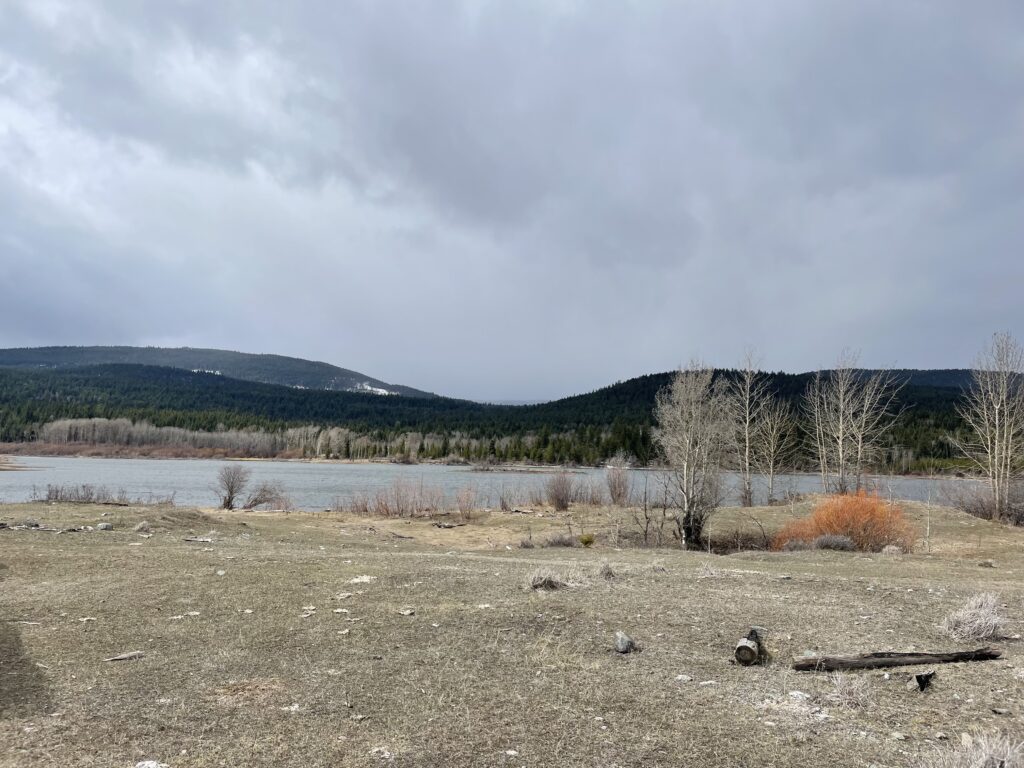
With so many competing interests a lake like this is hard to rehabilitate. Ranchers need water and grazing and restricting that costs them real money and hardship. They have range leases and water licenses and it’s hard for conservationists to overcome those challenges.
At this lake we met with the band elders, some of whom had lived on this site in the 1950s.
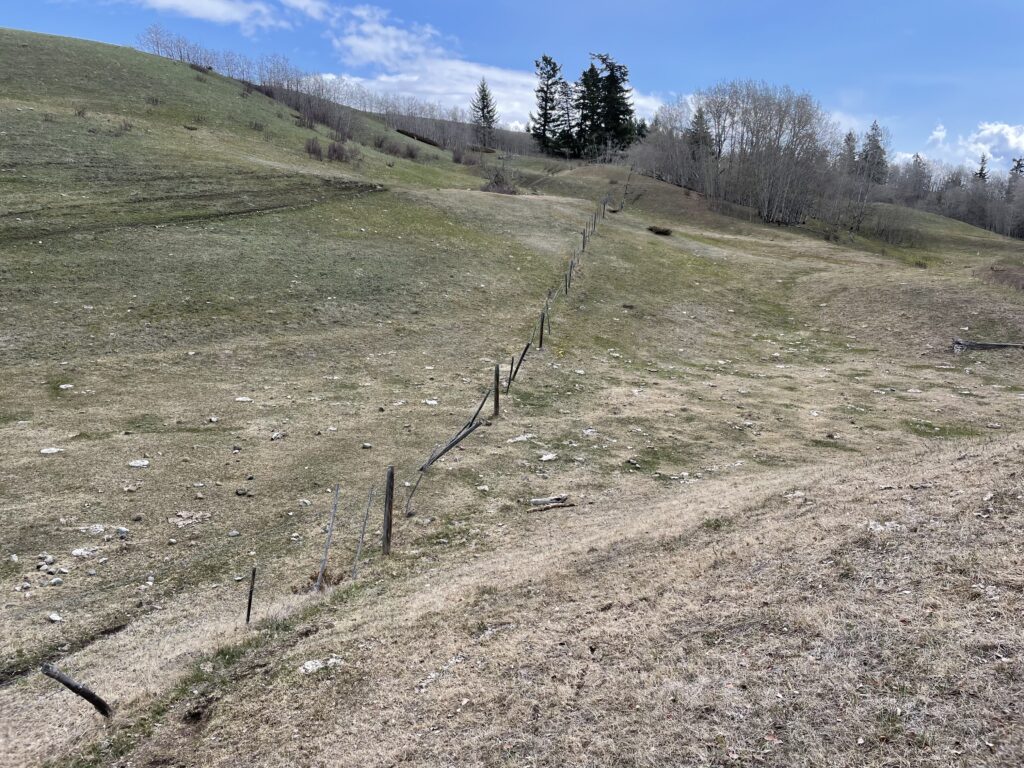
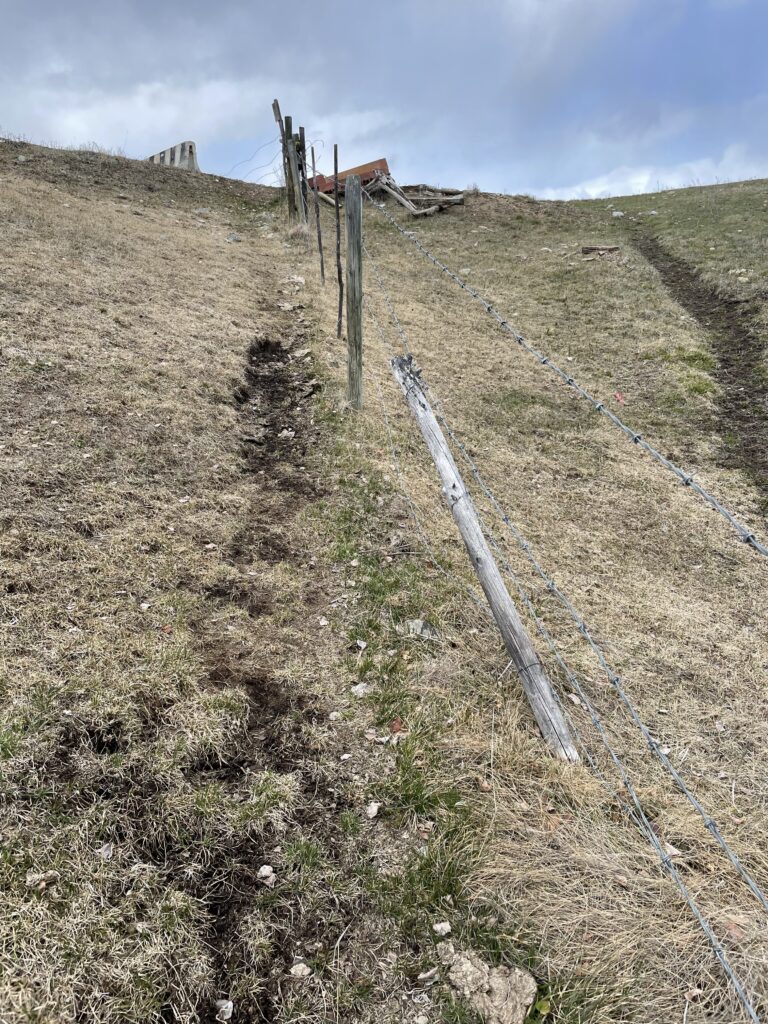
You can see at the top of the picture a cattle guard removed to restrict access, but that doesn’t stop cows, only drivers. The cows just walk over the fences, go down to the lake to get water, and destroy the shoreline.
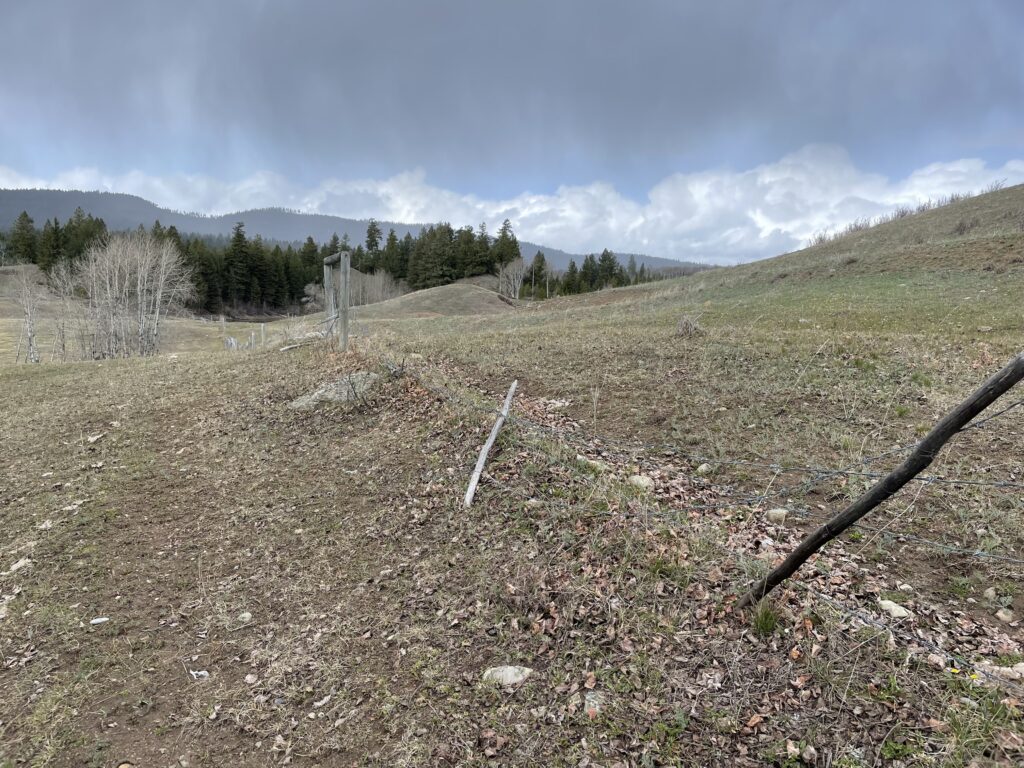
The second site was much better. It is completely contained within a parcel of private land so there is only one person to make the decision about whether we can do something on his land (and he is supportive). He has a large field that is bordered on one side by a river and on the opposite side by a hill. Along the base of the hill is a secondary watercourse that takes floodwater and groundwater from the river for a length of a few kilometres before emptying back into the river.
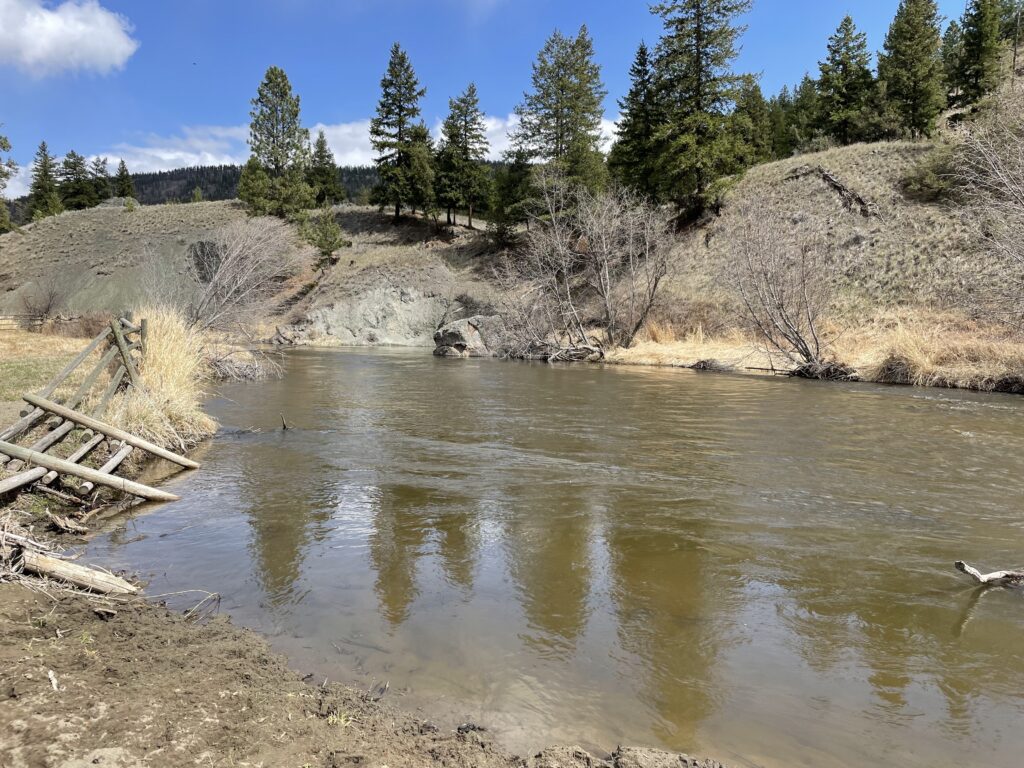
The plan is to deepen the watercourse and add dead end branch stems whenever possible, and feed it from an intake on the upstream side on the river. We’ll connect the hillside watercourse to the river by way of a ditch across the field. During high silt flood times we’ll close the intake to prevent sedimentation, and re-open it when the water clears up again. The picture above shows where the intake would be placed. The picture below shows the field that the water already crosses during floods, but which we’ll manipulate to have a constant, controllable flow (and by “we” I mean all member clubs of BCWF).
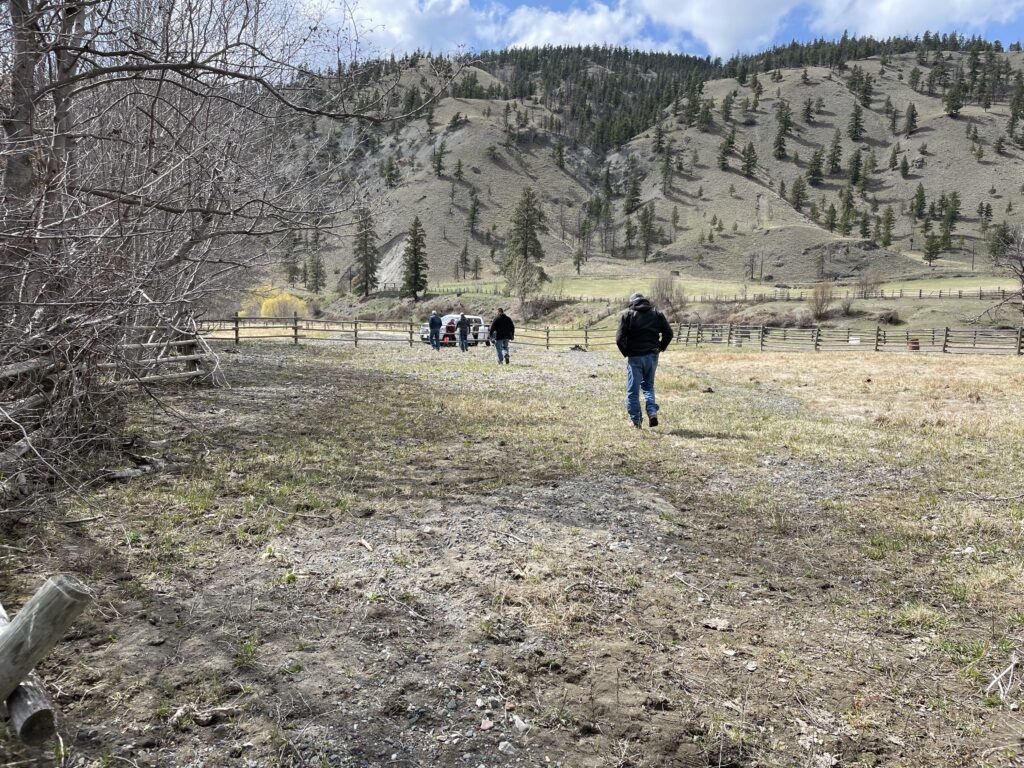
This will create what some fish nerds and wetlands nerds refer to as “frog water”. When you find the kind of water where you’d imagine finding frogs it’s often great habitat for coho. Good habitat can increase coho fry density by a huge factor.
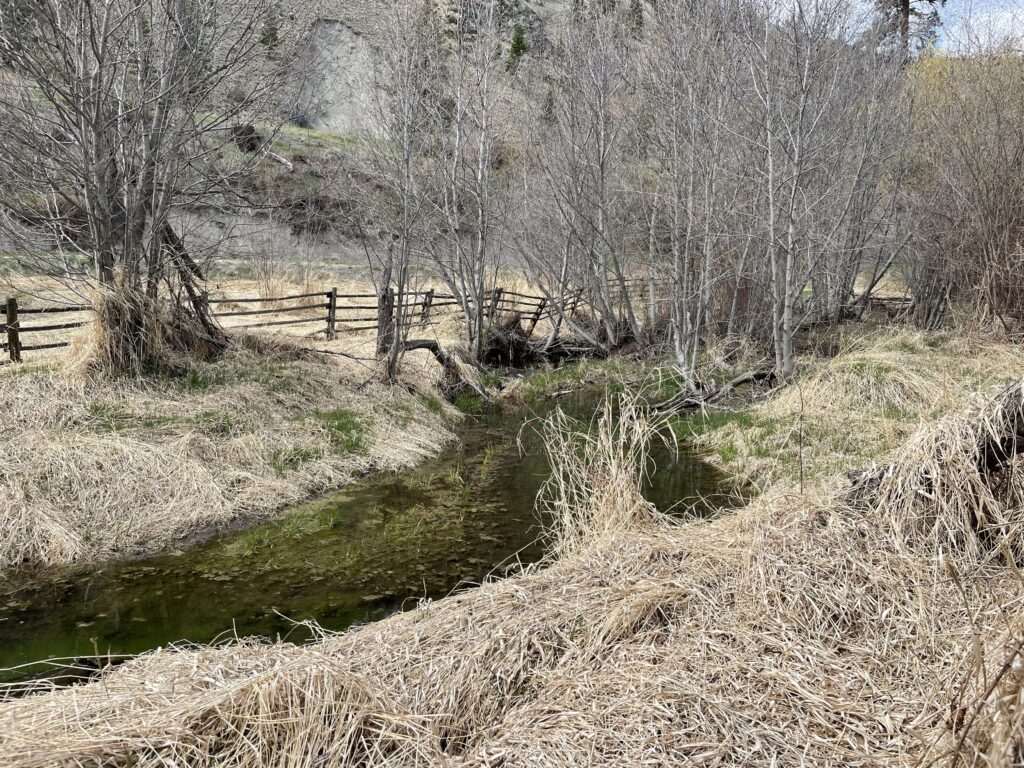
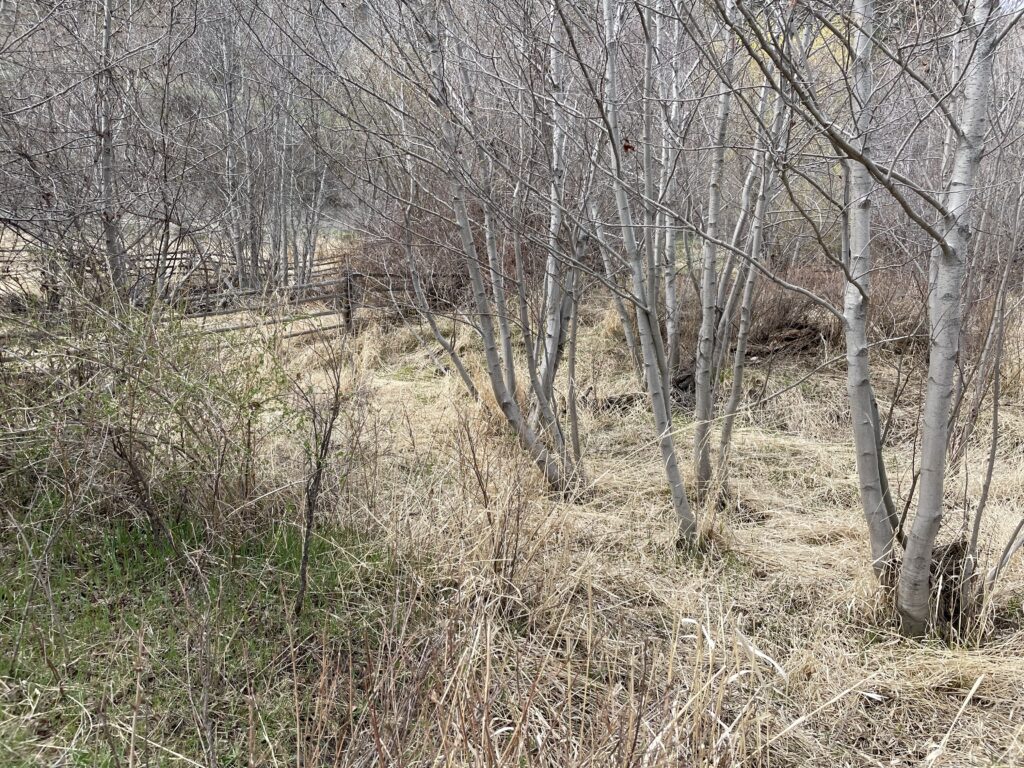
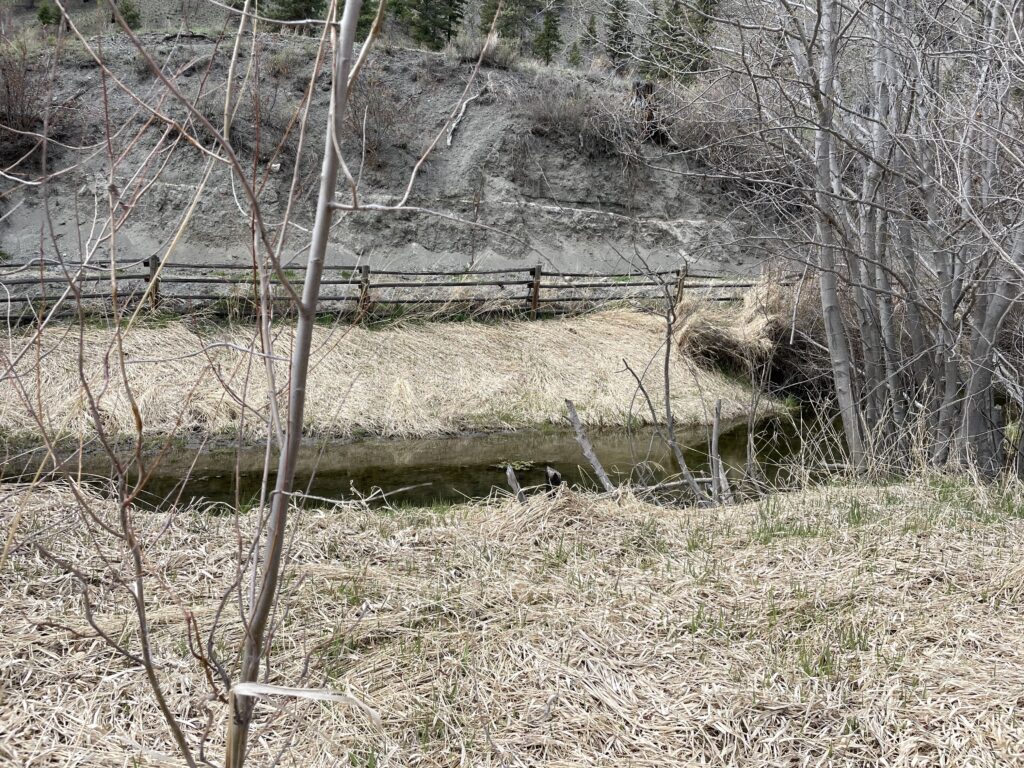
The images above show the in-grown watercourse. An excavator will spend about 20 days cleaning these out, making them at least 3 feet deep and adding branch stems for more habitat.
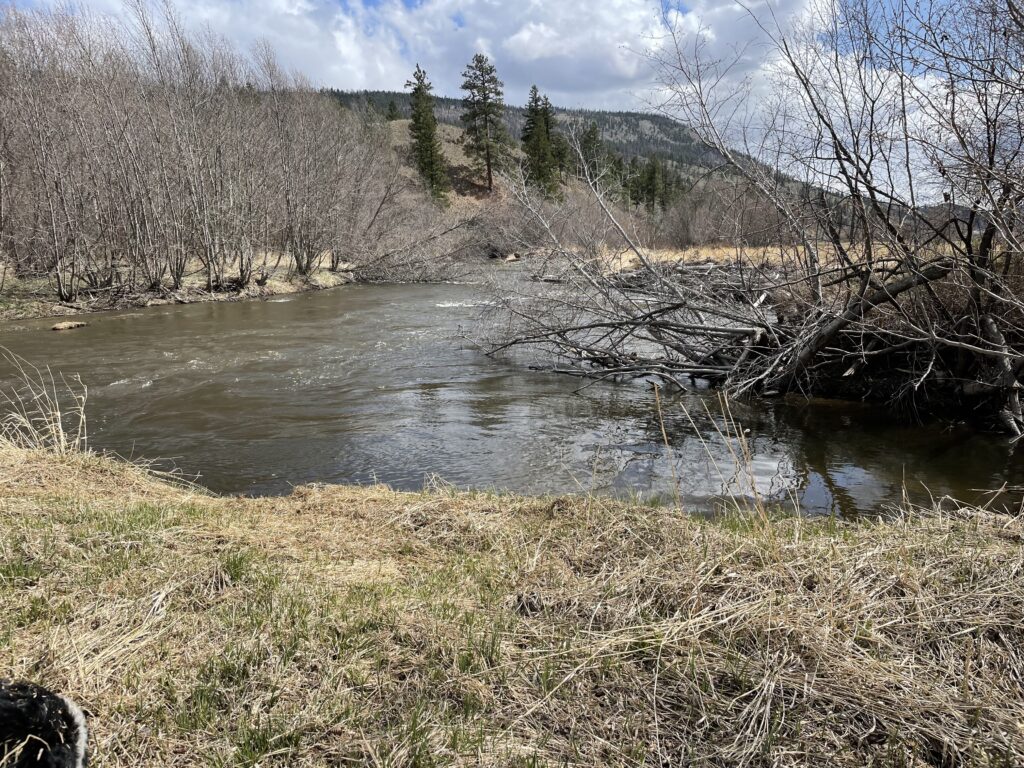
This is the end of the rearing channel, where the water taken out of the river a little upstream feeds back into the river again.
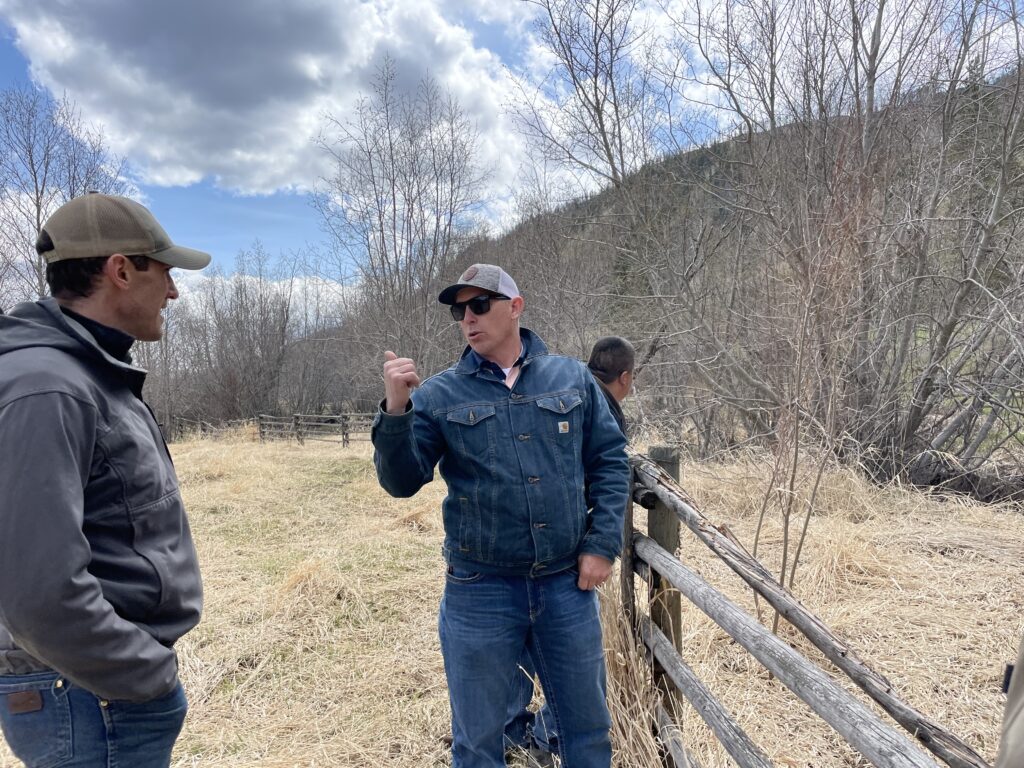
A long time, very experienced fish nerd, Sean, explains that not only will coho use this channel to rear fry, but will most likely return to spawn. In the picture with Sean is Jesse Zeman, Executive Director of BCWF, and First Nation member Keith. Although the nation’s elders accompanied us to the second site as well it was a long walk and most of them stayed back at the ranch buildings.
The total cost is expected to be somewhere between $125,000 and $200,000, and the habitat could easily add 200,000 fry each year, so it’s good value for the money. In fact, the project is so good that when I asked Neil Fletcher to rate it on a scale of 1-10 compared to all the other projects he does he gave it a 9.5.
What’s interesting about this project though, really, is the collaboration. The BCWF, the rancher and the First Nation are all going to be hands on in making this happen. The First Nation will provide some funding, equipment and staff to work on it. It’s unlikely that their members will ever catch any of the coho, but even if they do there is no question that non-Indigenous saltwater anglers like our club members will get a crack at them first, and probably land a few.
Overall it’s a great example of how consultation and reconciliation is good for conservation.